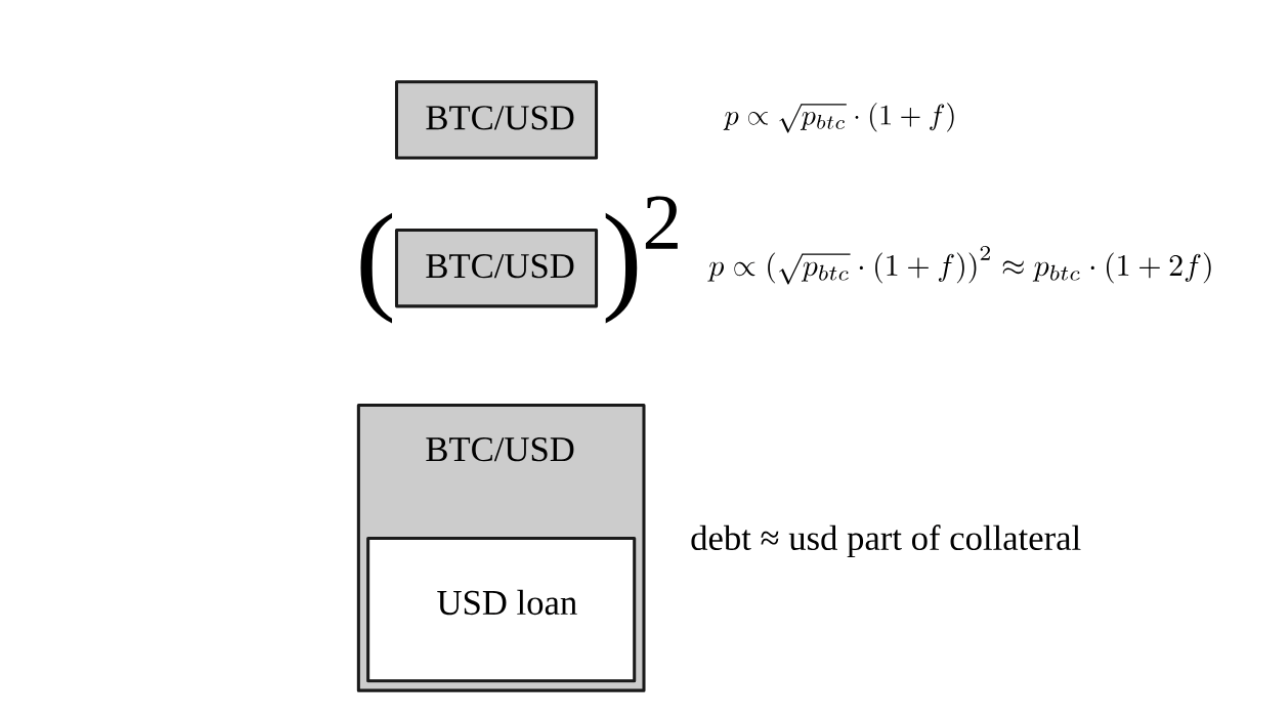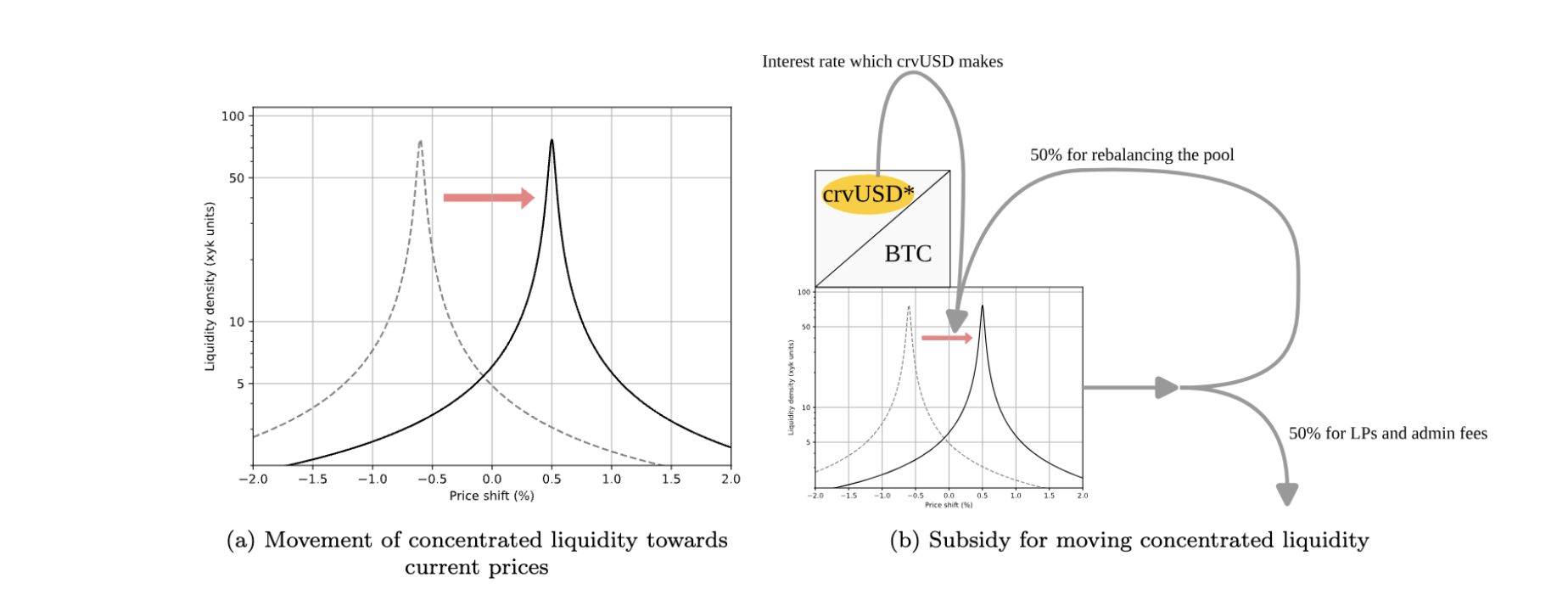Yield Basis is a DeFi protocol by Curve Finance that eliminates impermanent loss for Bitcoin and Ether liquidity providers by maintaining a 200% overcollateralized position using borrowed crvUSD stablecoins, effectively neutralizing price deviation risks.
-
Yield Basis removes impermanent loss by squaring the price dependency, ensuring liquidity providers retain value.
-
Liquidity providers can choose yield in tokenized Bitcoin or Yield Basis tokens, balancing inflation and emissions dynamically.
-
The protocol uses a market-based approach to regulate token inflation, adapting to bull and bear market conditions.
Yield Basis protocol mitigates impermanent loss for BTC and ETH liquidity providers while optimizing token emissions. Discover how Curve Finance innovates DeFi yield strategies.
How Yield Basis Protocol Eliminates Impermanent Loss for BTC and ETH Liquidity Providers
Impermanent loss occurs when asset prices in liquidity pools fluctuate, causing providers to hold less value than if they simply held their tokens. Yield Basis, developed by Curve Finance, solves this by maintaining a 200% overcollateralized position through borrowed crvUSD stablecoins. This approach squares the price dependency, removing the square root factor that causes impermanent loss, as explained by Curve founder Dr. Michael Egorov.
What Is the Mechanism Behind Yield Basis’s Impermanent Loss Mitigation?
Yield Basis uses compounding leverage to keep liquidity positions collateralized at exactly double their value. This precise overcollateralization neutralizes the impermanent loss effect by eliminating the square root price dependency. Dr. Egorov highlights that mathematically, squaring the price relationship is the optimal way to remove impermanent loss, ensuring liquidity providers retain full value regardless of price swings.

How Does Yield Basis Manage Token Inflation and Emissions Through Bifurcated Yield Options?
Yield Basis offers users the choice to receive yield either in tokenized Bitcoin or the platform’s Yield Basis (YB) token. This bifurcation creates a market-driven mechanism to set inflation rates and control token emissions. In bullish markets, users tend to stake YB tokens for price gains, allowing real yield to accumulate on the platform. Conversely, in bearish markets, users prefer Bitcoin yields, which counterbalances YB token inflation and sustains optimal value accrual.

Why Is the Market-Based Approach to Inflation Important for DeFi Platforms?
By allowing yield to be denominated in either Bitcoin or YB tokens, Yield Basis dynamically adjusts to market sentiment and conditions. This flexibility helps maintain token value stability and reduces excessive inflation during speculative phases. Dr. Egorov emphasizes that this adaptive design supports sustainable growth and user confidence in DeFi liquidity provisioning.
What Impact Does Yield Basis Have on DeFi Liquidity Providers and Market Participation?
Impermanent loss has long discouraged crypto holders from providing liquidity. Yield Basis’s innovative solution removes this barrier, encouraging more users to participate confidently. By mitigating financial risks and offering flexible yield options, the protocol enhances liquidity depth and market efficiency within the Curve Finance ecosystem.
How Does Yield Basis Compare to Traditional Liquidity Pools?
| Feature | Yield Basis | Traditional Pools |
|---|---|---|
| Impermanent Loss | Eliminated via 200% overcollateralization | Present due to price volatility |
| Yield Options | Tokenized BTC or YB token | Single token yield |
| Inflation Control | Market-based, adaptive | Fixed or manual adjustments |
Frequently Asked Questions
What is impermanent loss in DeFi liquidity pools?
Impermanent loss occurs when the value of assets in a liquidity pool changes compared to simply holding them, causing liquidity providers to lose potential gains due to price fluctuations.
How does Yield Basis prevent impermanent loss for Bitcoin and Ether liquidity providers?
Yield Basis maintains a 200% overcollateralized position using borrowed crvUSD stablecoins, which mathematically removes the square root price dependency causing impermanent loss, ensuring providers retain full value.
Key Takeaways
- Impermanent loss is a major barrier for DeFi liquidity providers, reducing potential earnings.
- Yield Basis protocol removes impermanent loss by maintaining a 200% overcollateralized position with crvUSD.
- Bifurcated yield options allow users to choose between tokenized Bitcoin or Yield Basis tokens, balancing inflation and emissions.
Conclusion
Yield Basis represents a significant advancement in DeFi by effectively mitigating impermanent loss for Bitcoin and Ether liquidity providers. Its market-based inflation control and flexible yield options enhance protocol sustainability and user confidence. As DeFi evolves, such innovations are crucial for expanding liquidity participation and optimizing returns.
